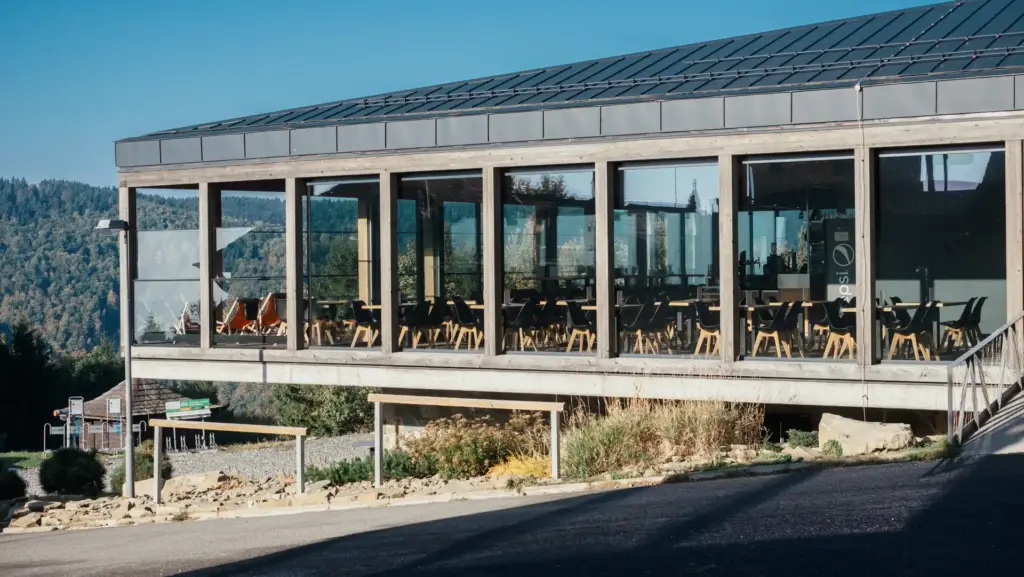About Pustevny
A wealth of experiences and opportunities in one place.
From Pustevny, you can head to Mount Radhošť, which has become a symbol of the region. Along the way, you will encounter the most famous symbol of the Moravian-Silesian region, the statue of the pagan god of harvest, Radegast, created by Frenštát native Albín Polášek.
History and Present
Pustevny is a very attractive destination for outings in any weather. You can reach the settlement near the mythical Mount Radhošť by cable car, on foot, by cross-country skiing in winter, or by bike in summer. Pustevny is the most popular tourist center in the Beskydy Mountains, and the statue of Radegast, which you will find on the way to Radhošť, is the most famous symbol of the entire Moravian-Silesian region.
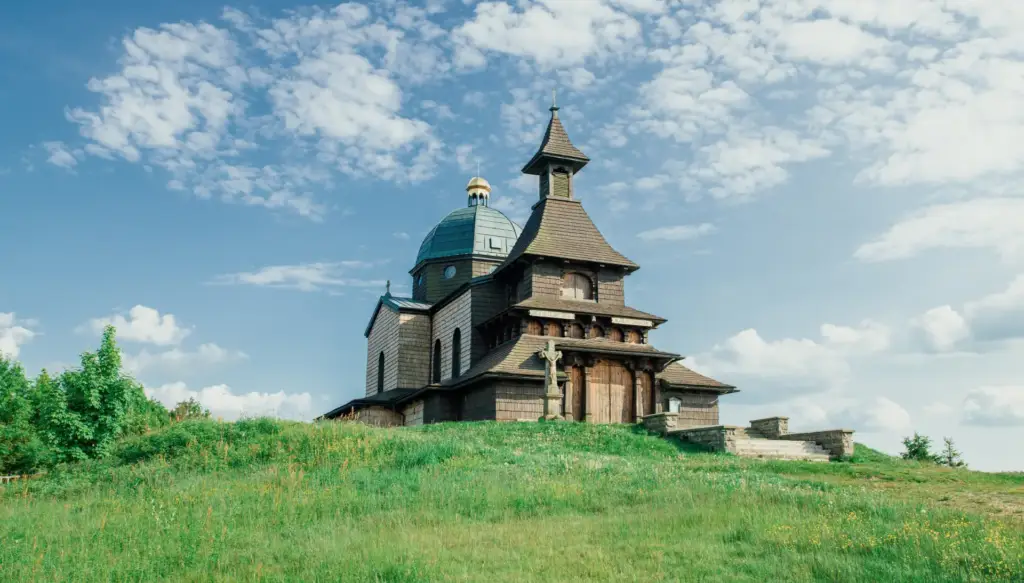
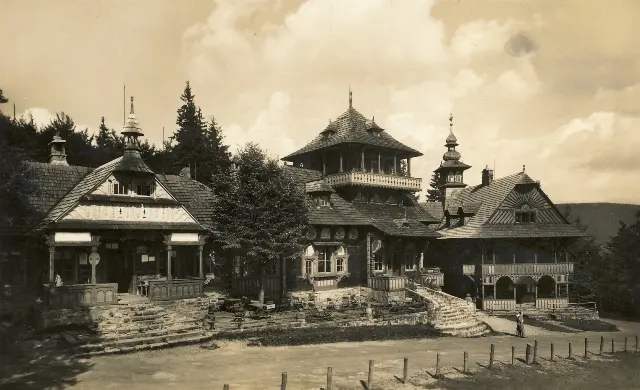
Poustevna
In the mid-18th century, a hermitage was established near the first wooden chapel of Radhošť for a single hermit, which is where the current name of the place originates. The last hermit was reportedly Felix, who is said to have died in his refuge around 1784.
The First Lodges
The attractiveness of Pustevny attracted members of the Frenštát association Pohorská jednota Radhošť, who aimed to make remote areas of the Beskydy Mountains accessible, mark hiking trails, and establish a network of mountain hotels and lodges.
The first lodge, Pústevňa, was built here in 1891, followed by the Šumná lodge three years later.
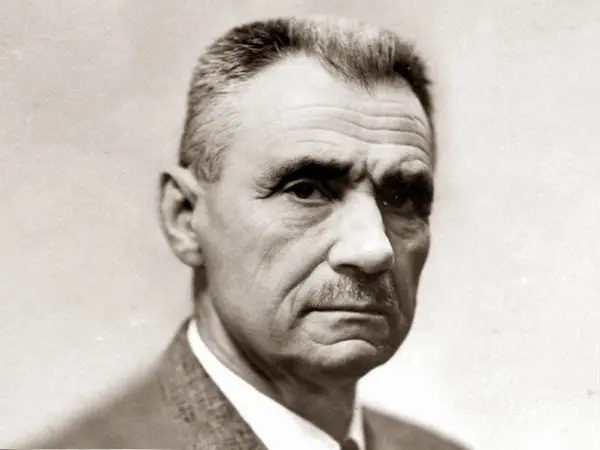
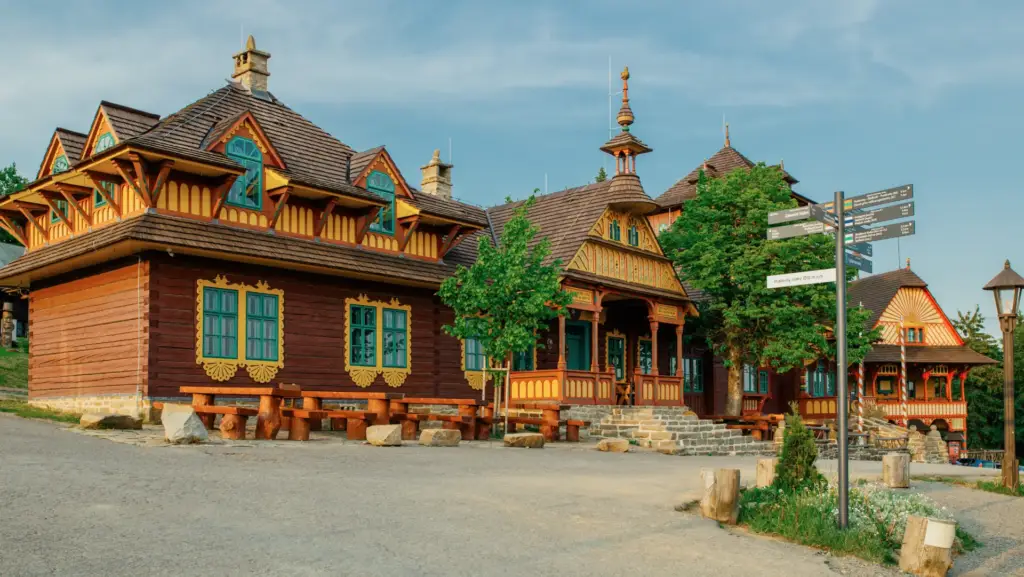
Libušín a Maměnka
Later, with the increasing interest of tourists, they decided to expand the accommodation and hospitality capacities. Therefore, they commissioned the construction of two additional lodges, designed by Slovak architect Dušan Jurkovič in the style of folk Art Nouveau. Libušín and Maměnka were opened to the public in 1899.
Further Development
Due to a decline in tourism following World War I, further construction development at Pustevny did not occur until the First Republic era. In 1926, the construction of the modern mountain hotel Tanečnica was completed. Six years later, another mountain hotel, Radegast, was built on the ridge between Pustevny and Radhošť.
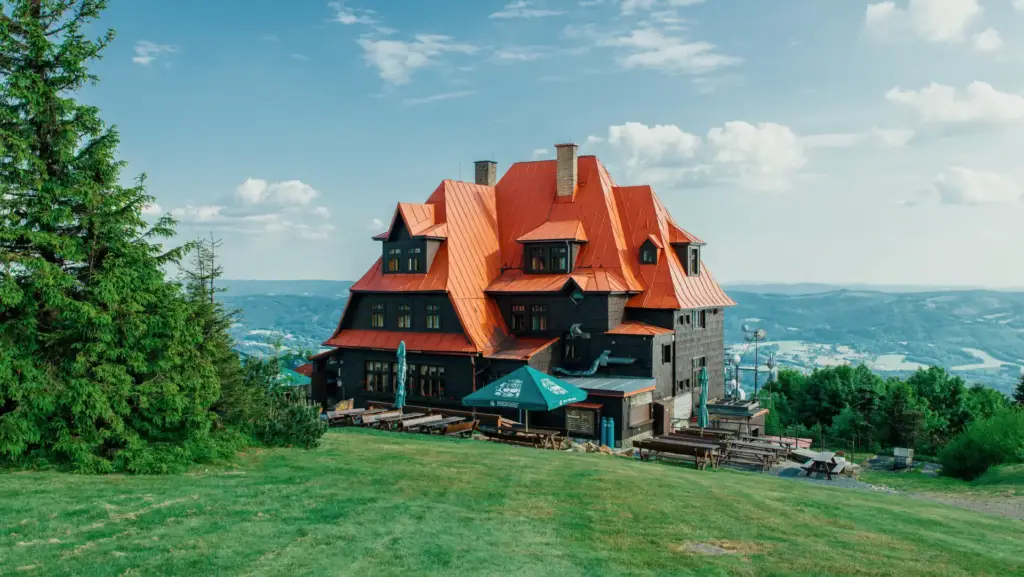
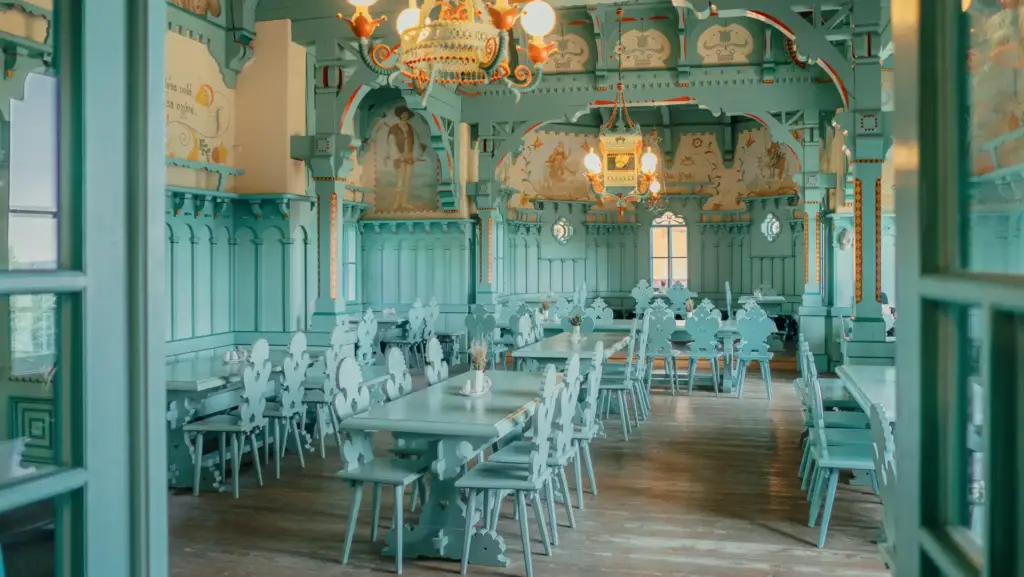
Reconstruction
Over the years, the lodges at Pustevny gradually fell into disrepair, and it wasn’t until the 1980s that the Wallachian Open Air Museum proposed a major reconstruction of Maměnka and Libušín. The project was not realized until 1995. After four years, in 1999, the Libušín restaurant was ceremoniously reopened, and in 2003, the Maměnka hotel was also made accessible.
The Pustevny area was declared a National Cultural Monument during the reconstruction.
Bell Tower
The wooden bell tower, designed by architect Dušan Jurkovič at Pustevny, is also over a hundred years old. Unfortunately, the colorful decoration designed by Jurkovič has not been preserved. However, the bell tower was reconstructed in 1997 according to the original plans of the architect, stored in the Slovak State Archive in Bratislava, and was covered with new shingles.
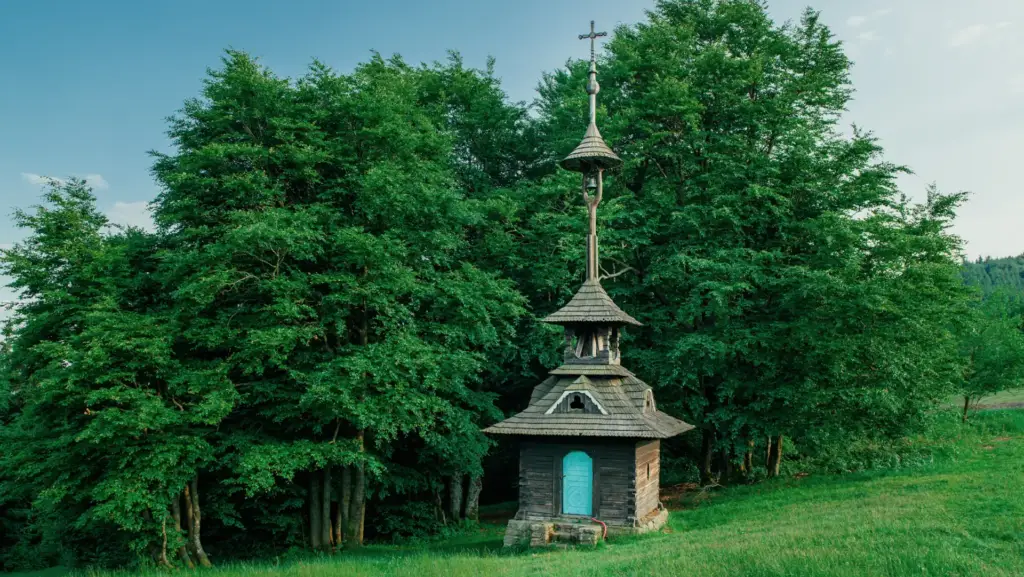
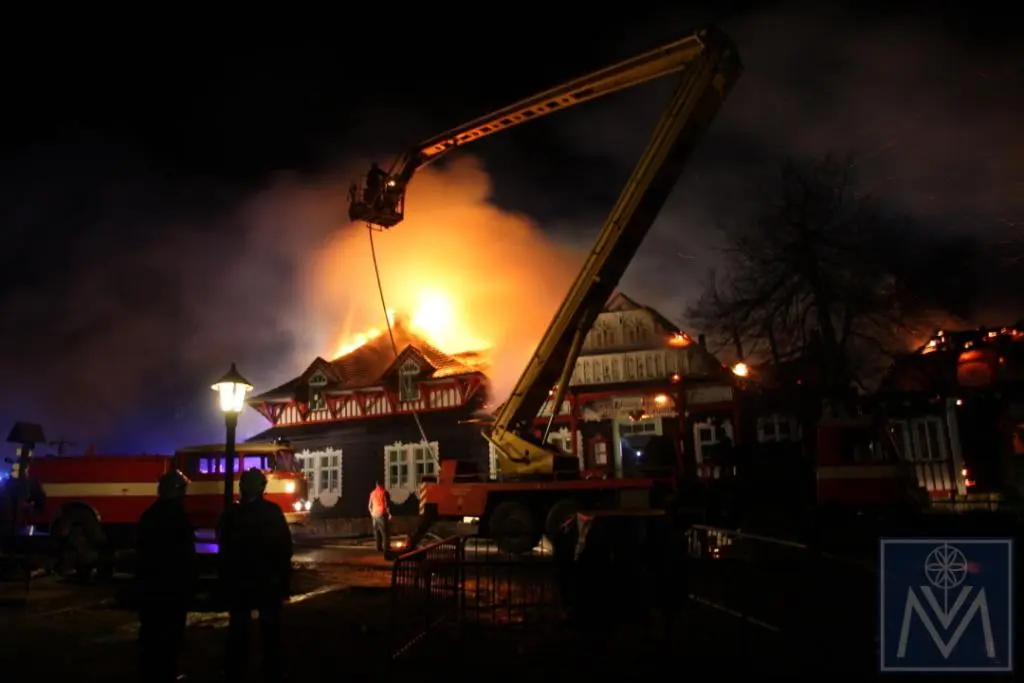
Fire
On the night of March 2-3, 2014, a major fire broke out at the Libušín lodge, damaging primarily its right section, which housed the most artistically valuable dining room.
Currently, the restoration of the historic lodge is underway, with completion scheduled for mid-2019. More information can be found on the website of the Wallachian Open Air Museum.
Upper station
In 2017, a new upper station of the cable car was put into operation, standing on the site of the original building, which had to be demolished in 2016 due to its poor condition.
The new station is a modern structure made of stone, wood, and glass. It is the work of Kopřivnice architect Kamil Mrva, who has been collaborating with the village of Trojanovice for years and is involved in the Radegast Beskydy project. The entire building was designed in harmony with the surrounding nature to blend seamlessly into the Pustevny landscape.
